drawing of sahara desert trees
The wall holding back a desert
(Image credit:
Getty Images
)
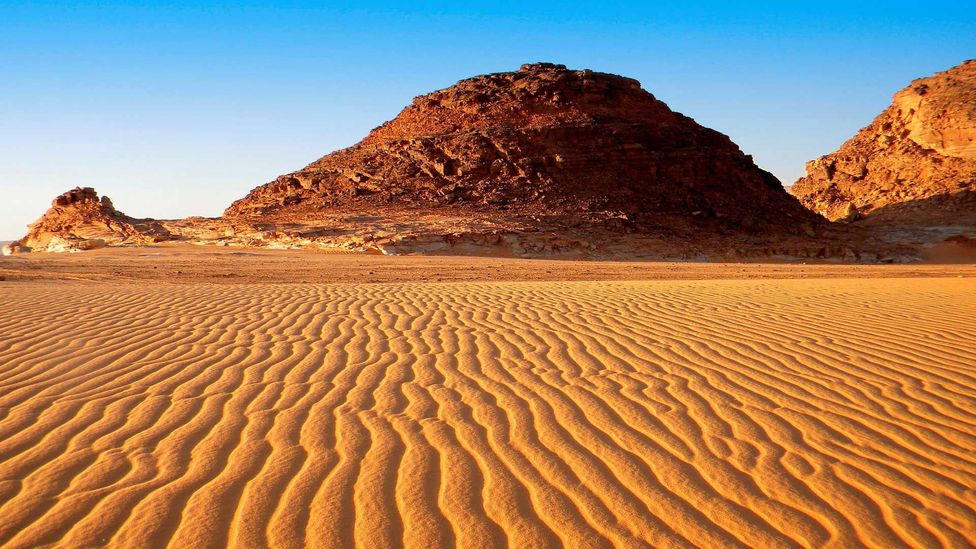
There is a wall appearing across the African continent, dividing north and south. But this wall isn't to keep migrants out, or to keep smuggled goods in check. It is holding back sand.
Y
You have to watch where you step in Paga, on the very edge of northern Ghana. Wander into the wrong part of this dusty African border town and you may just come face to face with the toothy grin belonging to one of the resident crocodile population.
The local people here have cultivated an alarmingly close relationship with these powerful reptiles, which live in "sacred" ponds around the town. According to local legend, the first chief of Paga was saved by a crocodile while on a hunting expedition and he decreed that none of his people would harm the animals from that day forward.
Today the locals still care for the crocodiles, feeding and protecting them. Women can apparently wash their clothes in the ponds without fear and some brave souls even swim with the animals. Tourists, drawn by the promise of "friendly" crocodiles, are encouraged to pose for gawky photographs while touching the reptiles. They are safe to approach, apparently, provided you do so from behind.
You might also like:
- The country disappearing under rising tides
- How to save a sinking island nation
- Why the arctic is smouldering
But Paga, and its crocodiles, face an encroaching threat from the land around it. Positioned on the southern edge of the semi-arid Sahel region that stretches across the African continent, Paga's surrounding area is covered with a delicate, sandy soil that clings precariously to the landscape. Twisted trees and stunted shrubs, perfectly adapted to coping with the periods of drought that hit the area, help to hold the soil together.
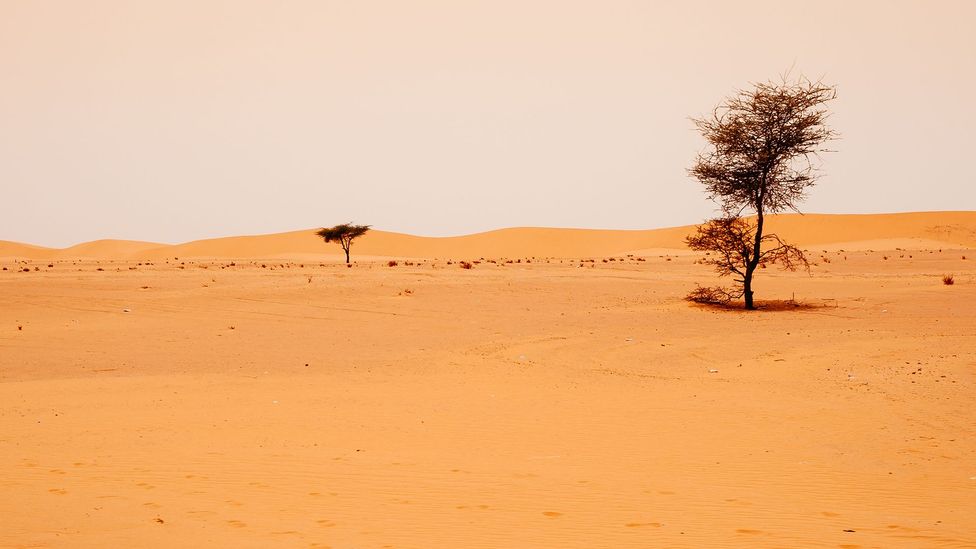
On the southern boundary of the Sahara, the Sahel is highly vulnerable to desertification (Credit: Getty Images)
But pressure from the growing population in Paga and the surrounding villages has led to many trees being cleared to provide fuel and building materials, and to make way for farmland. Without these to hold the soil together, wind and heavy rainstorms simply sweep it away, leaving nothing for crops and the wild vegetation to put its roots into. The land is turning into a desert.
"There is a lot of degradation in our environment because there's a lot of deforestation," says Julius Awaregya, founder of a local environmental group in Paga. "It has serious implications for our future generations, so we need to conserve what we have."
Awaregya is now helping to coordinate efforts to keep the desert at bay by building, of all things, a wall. But this is no ordinary wall, made of brick, stone or concrete. It is instead formed from trunks, branches and leaves – a living, green barrier to hold back the near lifeless desert.
On the day we speak, Awaregya had already dispatched members of his team to three nearby villages with truckloads of seedlings so they could join groups from the local community to plant new trees. Today they are planting acacia, mahogany, neem and, most importantly, baobab.
Fully grown baobab trees are a sight to behold. Their thick bulbous trunks, topped with a punk-rock bristle of stumpy limbs pointing skyward, have an other-worldly appearance. Baobabs – which are actually succulents – are perfectly adapted to the tough, dry conditions of the savannah and can live to be over 2,000 years old.
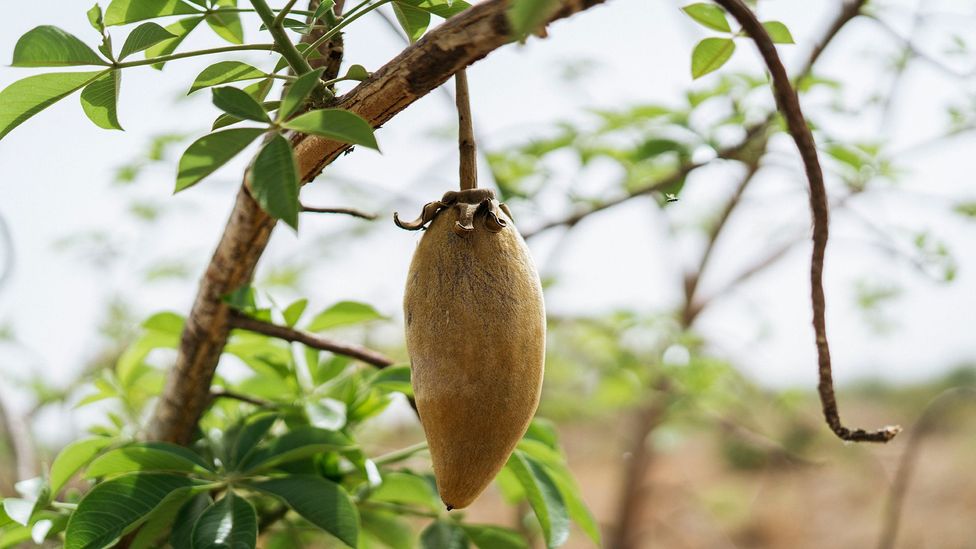
The baobab fruit dries in the sun for months before it is ready to be harvested, turning from green to brown (Credit: Aduna)
When the plants reach the still "youthful" age of about 200 years old they start to bear fruit – a green, prickly shell that hardens as it ripens on the branches in the sun to form a hard, smooth brown husk that contains a completely dry, off-white pulp that has a tart, citrus flavour. The saplings that Awaregya's team are planting, therefore, are an investment for the future.
Although they seem unappetising, the villagers of Paga prize the fruit. Traditionally the ripened, dry fruit were collected by local women and cooked into a sauce or porridge or even a kind of candy.
But now this harvest is becoming far more organised. Every December to April, groups of women from the villages venture out into the bush with long sticks to collect the fruit from the trees. Those they bring back to their villages are sorted, cracked open, the desiccated pulp ground in a pestle and mortar or by machines.
The resulting powder is then bagged up and shipped to Europe where it finds its way into trendy smoothies, juices, ice creams and health foods. It is part of a $3.5bn (£2.87bn) global market for baobab, which is projected to exceed $5bn (£4.11bn) in the next five years.
Drawn by the high levels of vitamin C, calcium, magnesium, potassium and iron, companies such as Coca-Cola, Costco, Innocent Smoothies, Suja Juice and UK-based Yeo Valley have all released products containing baobab. It has brought new value to a tree that was largely seen as having little economic worth in places like Ghana
"Baobab has a lot of potential," says Andrew Hunt, co-founder and chief executive of Aduna, a health food brand that has been working with small scale baobab powder producers in Ghana and neighbouring Burkina Faso. "It is a very special tree in Africa and has huge cultural value – in some places it is sacred and local people see it as being home to ancestral spirits. But it had little economic value and was being cut down to make way for cash crops."
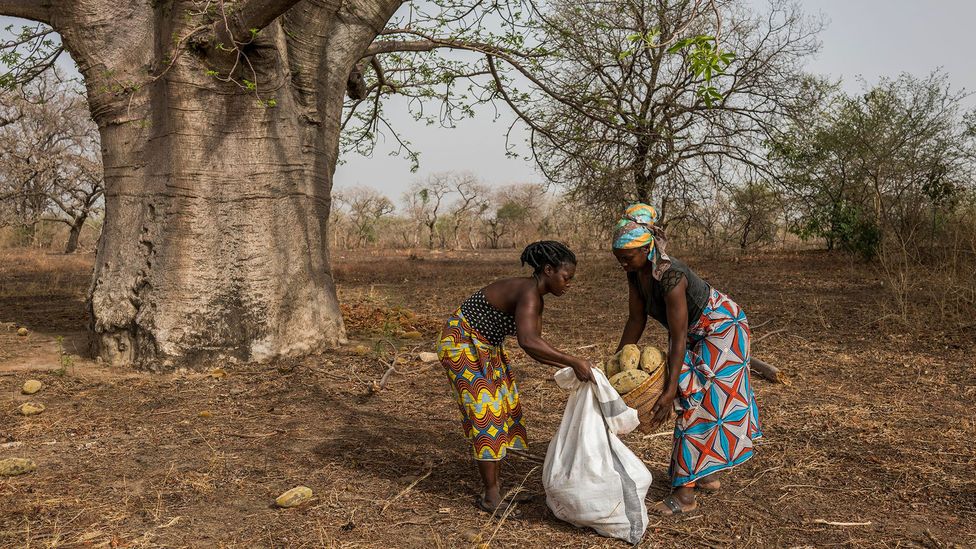
Women tend to harvest the baobab and carry them back to their village for processing (Credit: Aduna)
Now with growing demand for baobab as a health food additive, the communities who live in the arid landscapes where they grow are seeing the rewards of protecting these unusual looking trees.
Aduna pays about 45 Ghanaian cedi (around $8/£6) for a 38kg bag of baobab fruit together with an organic premium that brings the total payment to around £10 ($12), according to Hunt. The average annual income in many of the villages is less than £40 ($48), so it makes a significant difference to the women who collect it. It also funded the planting of around 5,000 new baobab trees last year and is expecting to double that this year.
The scheme is helping to contribute to a far more ambitious project known as the Great Green Wall. It is attempting to grow an 8,000km (4,970 miles) barrier across the entire width of Africa to hold back the spread of the Sahara desert. While the desert waxes and wanes with the drought that comes with the changing seasons, declining rainfall combined with deforestation and soil degradation has seen it grow.
Over the past century, the Sahara desert has been expanding by more than 7,600sq km a year and is now 10% larger than it was in 1920. The creep has been particularly pronounced to the south, where it has spread into the Sahel by more than 554,000sq km over the same period. The desert now covers an area of 9.4 million sq km (3.6 million sq miles).
It is a picture that is being replicated elsewhere. The UN estimates that 120,000sq km of land are lost to desertification globally every year.
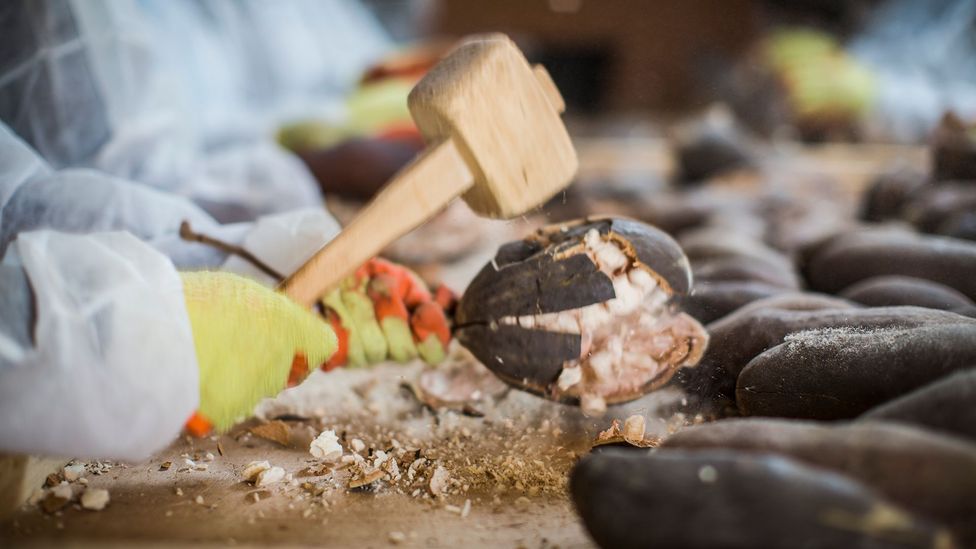
The baobab fruit dries to a hard husk that needs to be cracked open to get to the dry pulp inside (Credit: Aduna)
"Desertification [spreads] more like a cancer than a wave or forest fire," explains Ibrahim Thiaw, executive secretary of the United Nations Convention to Combat Desertification (UNCCD). "The loss to the economy globally is estimated to be $1.3bn a day due to loss of agricultural lands, grazing for livestock, the loss of land that could be used for tourism and land used for human habitation."
Launched in 2007 by the African Union, the Great Green Wall is a concerted attempt to slow and even reverse the spread of the world's largest hot desert. Supported by the UNCCD, more than 20 countries across the Sahel are now planting trees to create what they claim will be the world's largest living "structure".
But this will be far from a glorified hedgerow stretching across the continent. Around $8bn (£6bn) has been invested in establishing new, sustainable land management practices and finding ways to improve soil quality. This has involved drawing on the knowledge of indigenous people to find local methods of caring for the land.
In Burkina Faso, Mali and Senegal, for example, farmers have been rehabilitating land by using zai, a traditional practice of building lines, stripes and semi-circles of stones that help to retain water during dry periods and allow it to soak into the hard soil. In other parts of Ghana, villagers have been planting elephant grass as a way of holding the soil together, while also using it to weave baskets.
But at the centre of the project are trees. Senegal alone has planted more than 12 million drought-resistant trees in just over a decade since the Great Green Wall was launched.
"About 30 million hectares (300,000sq km) of degraded land has been restored across 20 countries," says Thiaw. "But we are only at the beginning of a long journey. I don't think it will be complete in my children's lifetime or even my own lifetime. We need to do much more and we need to do it at scale. Until now we have only been working with small projects led by pilot communities."
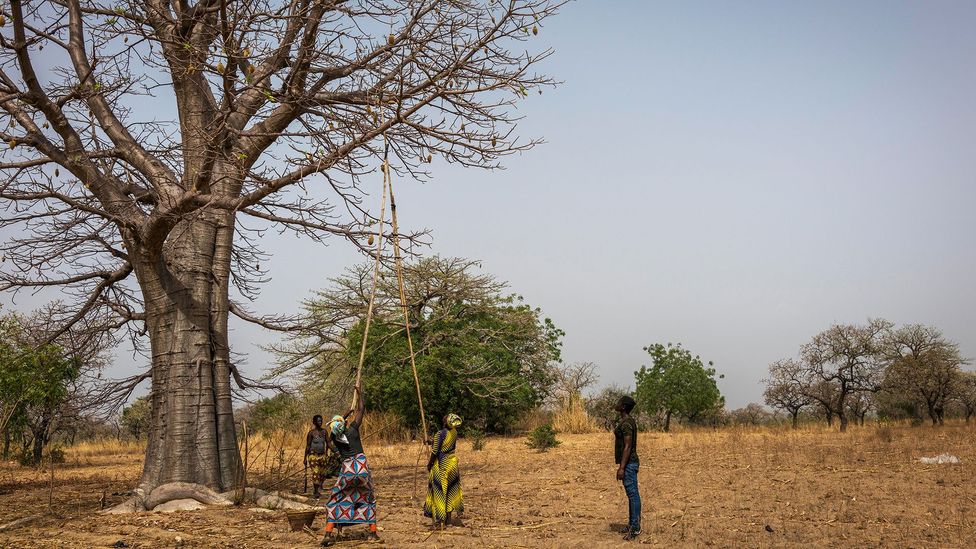
Demand for baobab in Europe and the US has given new value to the trees in Ghana (Credit: Aduna)
The UNCCD has set the target of restoring 100 million hectares (1 million sq km) of land in Africa by 2030. It is an ambitious target but one they hope will bring greater food security to the Sahel by improving the soil for crops and at the same time help to draw millions of tons of carbon out of the atmosphere.
The success has been mixed though, and the initiative has been criticised for slow progress. Outside Africa, similar attempts by China to plant forest barriers to hold back the Gobi desert have also shown limited effects. Indeed, there are indications that dust storms from the Gobi may have increased rather than decreased.
But this is where the UNCCD hope the new global demand for baobab might help. While it is all very well asking local farmers to plant, protect and nurture trees, they will always compete with the need for food and income. But if the trees can help to produce income themselves, then there is a compelling reason for letting them grow and spread.
The UNCCD is hoping to do this by attracting the private sector into the Great Green Wall initiative. It is hoping that products like Baobab may encourage major multinational food companies to invest in the planting and harvesting schemes that are being set up in places like the villages around Paga.
"Governments cannot do this alone," says Thiaw. "We need to engage the private sector so they can realise that it is profitable to restore land." Later this year the UNCCD will launch the Great Green Wall Sourcing Challenge and is already talking to a number of major food corporations about getting involved.
And the potential extends beyond just baobab. The leaves of the moringa tree are also growing in popularity as a health food. Native to the arid sub-Himalayan areas of India, Pakistan and Afghanistan, it is well suited to growing in conditions found in many parts of the Sahel. Shea butter, popular in cosmetics and moisturisers, comes from the nut of trees that also grow in the region.
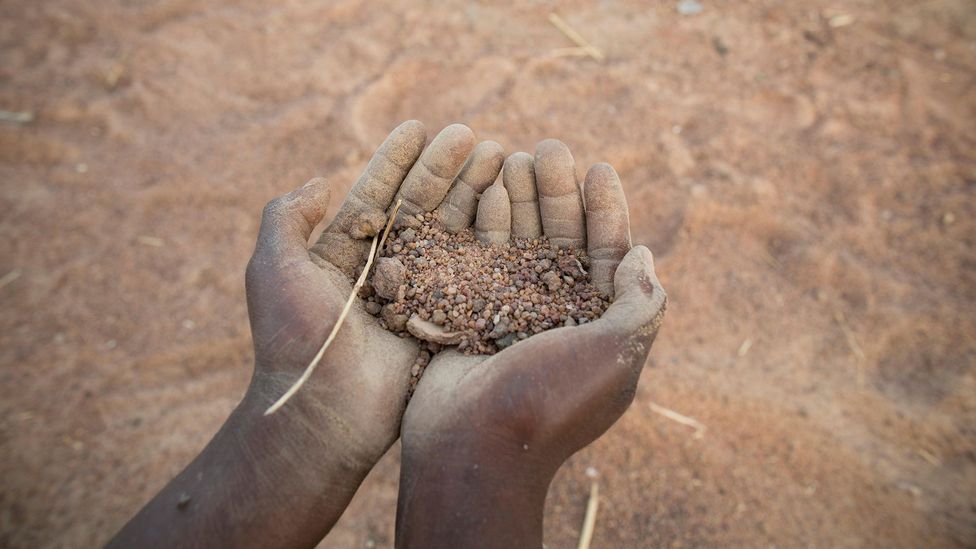
The sandy soil in Ghana is extremely vulnerable to erosion without trees and other vegetation to hold it in place (Credit: Alamy)
Andrew Hunt from Aduna also sees promise in grass crops that are traditionally grown in West Africa such as fonio, a type of millet that can be made into a cous cous-like product and could give other trendy grains such as quinoa some tough competition.
"Baobab is just one ingredient in a much bigger picture," says Hunt.
But there are some who have concerns about what might happen if large multinational companies and food manufacturers start creating a wider demand for these crops. While it can bring valuable income and investment into an area, there is also a danger of over exploitation or even the creation of new mono-crops, much like the vast palm oil plantations that now dominate large parts of southeast Asia, Central America and South America.
This might only exacerbate some of the problems that are driving desertification in the first place, warns Lindsay Stringer, an expert on land degradation and water at the University of Leeds in the UK.
"While desertification itself might occur at quite a local scale, the political and economic drivers of those decisions can be operating at much larger scales, in places far away from the actual sites of desertification," she says. "It's easy for people who aren't in drylands to be totally unaware of what's going on in the drylands as a result of their consumer behaviour."
Strategies that provide multiple benefits may be more suitable, she says. Planting fruit trees – such as the desert date – can help to stabilise the soil, create shade and provide food for local people. Giving local people land rights can also help as it makes them more willing to invest in sustainable ways of managing the land.
"We need to change some of our human-created systems rather than just plant things to solve the desertification issue," adds Stringer.
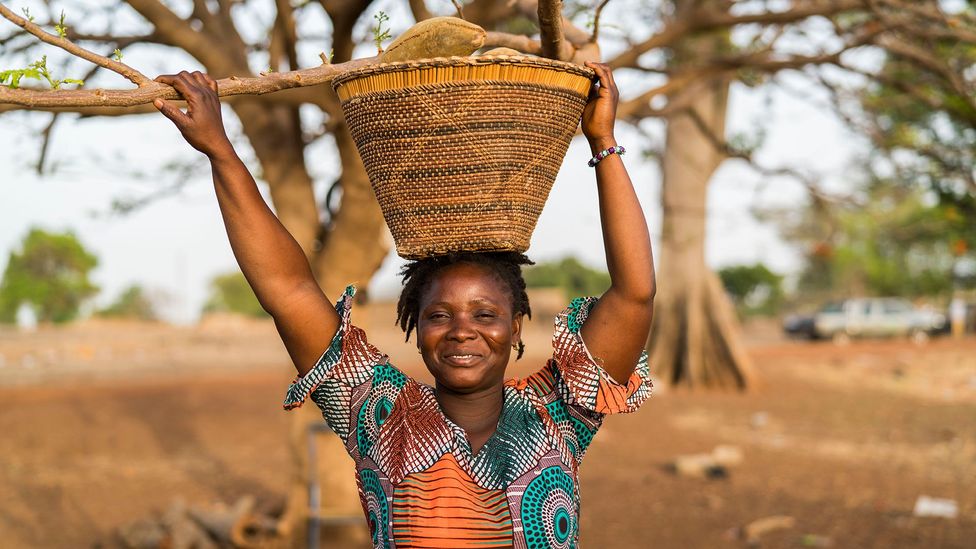
The baobab harvest has given women in the villages of northern Ghana a new voice in their communities (Credit: Aduna)
There are other approaches, too, that can have an impact. Solar energy, for example, can reduce the need for wood as fuel and so the need to cut down trees. The Moroccan city of Ouarzazate, often afflicted by desert storms on the opposite side of the Sahara, has been harnessing solar power to treat wastewater and then using this to irrigate the surrounding land.
In Burkina Faso, microbiologists like Forfana Barkissa are inoculating cowpea plants and acacia trees with different types of bacteria and fungi to see if they can help them become more resistant to drought and improve their growth.
Back in Paga, farmers are also trying to make biochar – charcoal used to improve soil fertility – from the straw and other crop waste left after harvest, which they can then churn back in to the earth.
For the women who harvest the baobab to be exported for sale in Europe and the US, there have been benefits too. Some of the village cooperatives have been able to get tricycles to make transporting the sacks full of baobab seeds through the bush easier.
Women are also becoming more empowered within their communities and more involved in decisions within their own households.
"Before, it was difficult for women to say they wanted to do things as they didn't easily have access to income," says Julius Awaregya. "Now they have their own income they are making decisions at the household level."
The local communities too are changing. "They don't burn the bush or set fires anymore," adds Awaregya. "They have created their own community laws to protect the trees."
With more trees and better soil, it might mean the people of Paga and their crocodiles can live alongside each other for a good while longer.
--
Join one million Future fans by liking us on Facebook , or follow us on Twitter or Instagram .
If you liked this story, sign up for the weekly bbc.com features newsletter , called "The Essential List". A handpicked selection of stories from BBC Future, Culture, Capital, and Travel, delivered to your inbox every Friday.
johnsonancervent1990.blogspot.com
Source: https://www.bbc.com/future/article/20190902-the-wall-holding-back-a-desert
0 Response to "drawing of sahara desert trees"
Post a Comment